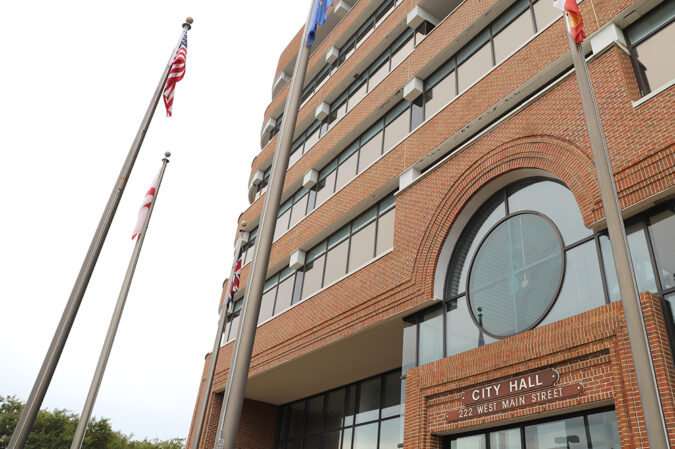
by Jeremy Morrison, Inweekly
It was a changing of the guard during this week’s mayoral press conference, as out-going mayor Grover Robinson handed the lectern over to incoming Mayor D.C. Reeves. Reeves has been integrating into operations at Pensacola City Hall for weeks, and said he feels ready to lead the city.
“I don’t know that Wednesday is gonna feel much different than today does, because I’ve been up on the seventh floor working with everybody,” Mayor Reeves said. “You know, when you have 14 months to think about what this might be like, at some point you’re ready to go and you have a little urgency to get things started.”
Baptist Housing Bonanza?
Mayor Grover Robinson has been hinting for a while now about the potential for affordable housing developments on the site that Baptist Hospital will soon be vacating for its new facility. The time has now come for the city to put some skin in the game, with a potential development deals being courted by Baptist requiring nearly a half million dollars worth of municipal buy-in.
“All this does is give us a chance,” clarified Robinson. “It’s a lottery type system.”
Baptist is currently looking at two separate residential developments, each consisting of more than 100 units. The projects would be developed by the nonprofit The Pace Foundation, with one catering to seniors and the other a multi-family project.
For financing, Baptist is turning to the Florida Housing Finance Corp. for low-income housing tax credits. It is seeking a 4 percent credit, and is also going for a more-competitive 9 percent one.
“There’s only a certain amount of 9 percent deals that are granted. A 4 percent deal is much easier to obtain,” Mayor Reeves noted.
In order for Baptist to try for this financing, it needs municipal backing. Specifically, it needs $460, 000; the 4 percent bid has already secured the much lower amount of $37,500 from the city.
Robinson said that Pensacola City Council members should be looking to approve this funding contribution by early December. It is not yet clear where these funds will be coming from.
“We’re finalizing this at this time,” Mayor Reeves said.
Robinson noted that if these two projects at Baptist go through — taking up only a fifth of their overall footprint at the West Moreno Street campus — it will go a long ways towards the city realizing its goal of creating 500 units of affordable housing within five years.
“This is probably the best way — this is the shortest way for us to get affordable, attainable housing built tomorrow,” Robinson said.
The Economics of Wordplay
If these two projects at Baptist go through, the financing will require that the housing units be affordable, or held to a certain price point. In this instance, it’s likely 60 percent of the Average Median Income (AMI).
But as for the city’s overall efforts to increasing the area’s affordable housing stock, gears may be shifting — linguistically, as well as in practice.
“Attainable housing, at this point, will be our number one focus,” Mayor Reeves said during Monday’s presser.
Mayor Reeves prefers the term ‘attainable’ over ‘affordable.’ This represents a philosophical shift from a focus on creating housing for people who cannot afford the current available market rate and creating housing for people who may not be held to a lower price point.
“We aren’t building enough period,” Reeves said. “So, it’s a two-pronged process. One is, how do we build supply period, market-rate, any kind of supply — like, how do we get more doors here, first — and then second is, those tactical approaches on workforce housing, on attainable housing at a certain AMI, that kind of stuff.”
The new mayor went on to say that the term ‘affordable’ was subjective — that what might be affordable to a doctor, “if somebody makes a million dollars a year,” might not be to someone else — and that he intended to focus on the more “holistic” approach of increasing the city’s “attainable” housing. Reeves based this approach on the concept of “migration,” which posits that an uptick in any housing will lead to a loosening of the housing market overall and opening up of recently vacated units on the lower end of the spectrum.
“I don’t look at it as any different,” Reeves said. “I use ‘attainable housing’ whether it’s 60 percent AMI, 80 percent, 100, workforce, I talk about the whole issue as ‘attainable housing.’”



